-
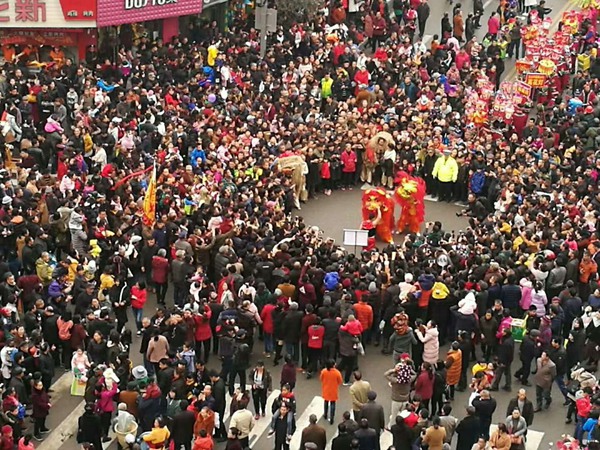
There are many different beliefs about the origin of the Lantern Festival. But one thing for sure is that it had something to do with celebrating and cultivating positive relationship between people, families, nature and the higher beings they believed were responsible for bringing/returning the light each year.
Culture
2011-02-17 10:49
View:2702
-
![Zhangjiajie Spring Festival [Photo Gallery]](/attachments/2011/02/2_201102151548361xq66.jpg)
During the Spring Festival, A small village in Zhangjiajie - LuoShui, folk artists in a unique way to enrich our cultural life, extending for hundreds of years, they were not just young people, there are children, women, elderly, The program is rich and colorful performances; Zhangjiajie LuoShui Welcome You!(Source from shuire)
Culture
2011-02-10 15:46
View:13931
-
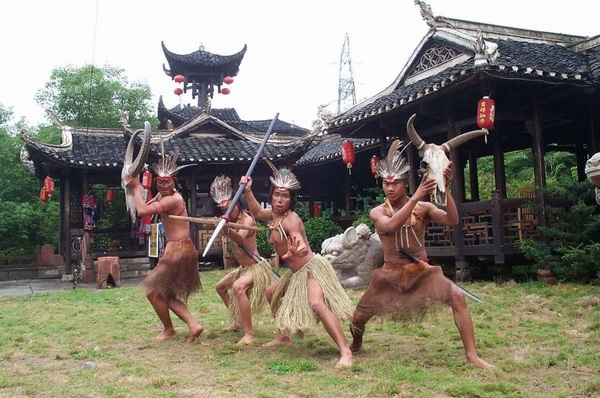
The Maogusi dance is an ancient dance popular in areas inhabited by the Tu ethnic group in western Hunan Province. "Maogusi" means grandpa in Chinese. The dance originated from the sacrifice rituals of the ancient Tujia people.
Culture
2011-02-03 23:03
View:5914
-
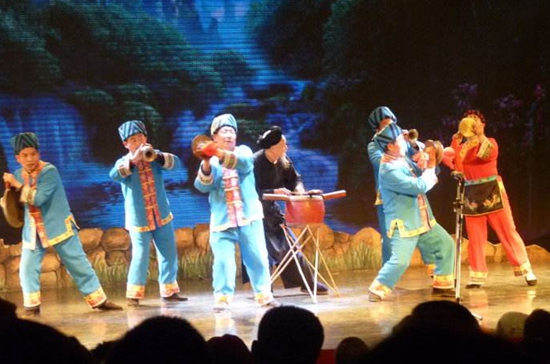
As a famous tourism destination in China, Zhangjiajie is known for its beautiful scenery. But few people know there lies a small county named Sangzhi, where local people are expert singers and dancers. The people kept their authentic musical style for centuries. Located at the interior of Wuling mountain range, Sangzhi district was inhabited by 17 minority ethnic groups, including the Tu and Miao people for more than 100,000 years. It boasts a beautiful scenic view with surrounding mountains and numerous babbling brooks. For centuries, Sangzhi people lived a relatively isolated life and accumulated rich cultural resources, including Sangzhi Folk Song. The folk song originated during working hours and was a method of communication and expression of personal emotion. Sangzhi people have the instinct to sing, especially from the high mountains. "If you stand on this mountain, I stand on the opposite one. There's a long distance between us and we can't see each other, but we can communicate by singing loudly." Song Haixia, a Sangzhi local explains.This is a typical antiphonal singing by a group of Sangzhi youth. It expresses the adoration between young men and women in a question and answer mode. There's a loud holler at the end of the song, which is one of the characteristics of Sangzhi Folk Song."Sangzhi Folk Song is featured by the ornamental words in the lyrics and the holler at the end which are very unique and vivacious. They originated from our dialect." Three lines usually compose typical Sangzhi folk songs, which is different to most traditional folk songs in China. It's a manifestation of Sangzhi's worship to the number "three". The lyrics of Sangzhi Folk Song mainly focus on the beautiful scenery and sincere intimacy between lovers. People usually compose the melody and create lyrics when working in the field or meeting an ideal mate. Here is another Sangzhi Folk Song by a local singer Zhao Qunjin. The lyrics go like this. I am gathering firewood on a high mountain, when I see a girl who is washing clothes by the river at the foot of the mountain. "This is Sangzhi men's unique way to woo girls. If the girl heard the song, she would answer by singing the same tune."Here is the girl's answer. Sangzhi Folk Songs' infectious enthusiasm and beautiful melody impressed many. In 2003, famous Hunan-based folk song singer Song Zuying successfully performed at the Golden Hall of Vienna. A Sangzhi Folk Song named "Lamp stand on the Masang Tree" was one of the highlights of the show. Now, Sangzhi Folk Song is an Intangible Cultural Heritage in China, and is a required course in middle and primary schools in Sangzhi County. With lasting charms, Sangzhi people hope their songs will spread to other places and be appreciated by more people.
Culture
2010-12-15 18:30
View:3400
-
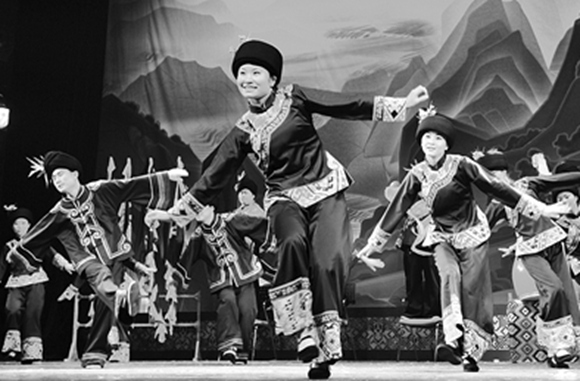
The Hand-waving Dance is the most popular ancient dance of the Tujia people. In the past, it was a kind of martial dance and used in fighting with enemy. It lasts from the beginning of January to the 17th of the lunar calendar. Hundreds or thousands people perform the dance. They are dressed in splendid attire, singing and dancing. At night, they beat drums and gongs. In these days, all the Tujias are immersed in a warm and lively atmosphere.
Culture
2010-11-23 17:26
View:4112
-
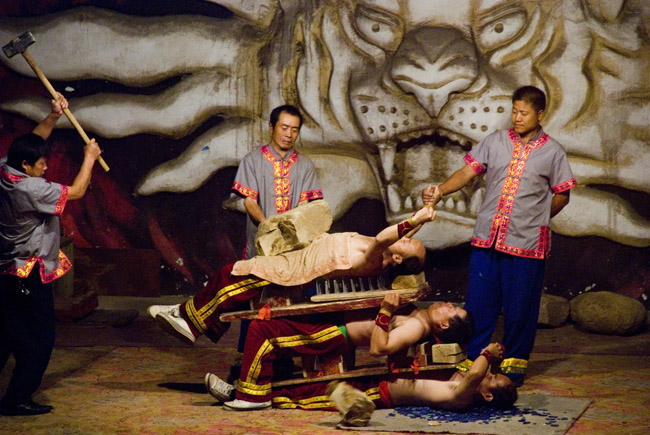
From historical records we learn that the magical Qigong of Zhangjiajie was invented by Cuiguzi; hence it bears the name Guigu Qigong.Zhangjiajie enjoys a high reputation as County of Hard Qqigong, especially in Guanliping village at the foot of Tianmen Mountain. It is the order of the day for men and women, young and old to practice this style of Qigong. Among the practitioners, a man by the name of Zhao Jishu was awarded first prize in the National Martial Arts Competition in 1979. Thus honored, he accompanied some central governmental leaders for visits to Luxembourg was effusive in his praise for this international Qigong master and said this international Qigong master is real something. A Frenchman exclaimed that Chinese Hard Qigong displays true science and is a treasure shared by all humanity.As for the performances, they usually involve lying face down on sharp steel forks, among other amazing displays. Though the performances are exciting and well worth watching, I am afraid that they might be a bit too stimulating for some people. It was reported that during Zhao Jishus demonstration in Luxembourgs national theatre, two elderly ladies became terrified and fainted.
Culture
2010-11-23 17:23
View:4642
-
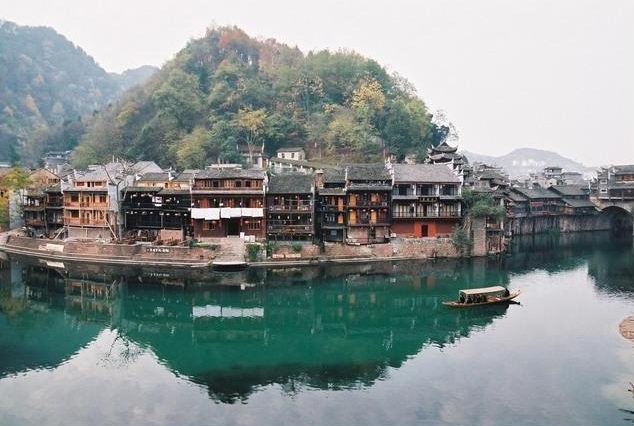
Nowadays, as people travel to many places in the world, they make the observation that almost all dwellings are made of steel and cement, with little or no variety. As we express astonishment at the enormous progress in our world, but do you feel a bit of nostalgia and sadness? And we may ask the question: here are the social distinctions among our homes?The Tujia peoples Diaojiaolou (stilted house) house has its own ethnic distinctiveness; for, it is constructed in such a way as to overhang the water and be supported by many wooden pillars. According to old tang book, the specific reason for building such a structure is to deliver the inhabitants from miasma, poisonous vegetation and venomous snakes. Aside from this, Tujia people are accustomed to constructing their houses over the water and in proximity to the mountains, with most residences established in the valleys, giving the appearance of crouching tigers. Clearly, the best way to construct a spacious and stable house, while economizing on material, is to lay the foundation on wooden pillars and build the structure upon it. Over several millennia, a simple shelter against wind and rain has evolved into a construction, which is practical, graceful and artistic, harmonizing with the surrounding natural environment.SomeTujia people are wealthy and some are poor; some of their homes are rather large and others are modest in size. The layouts of typical Diaojiaolou houses (stilted house), however, are usually identical. They are situated on a flat foundation and appointed with 3to 5 rooms in the front portion, a main hall in the middle, and the principal living quarters along either side of the hall. Attached to the living quarters, then, is wing-room, which are usually divided into upper and lower stories. The upper portion serves as the ladys chamber, while the lower story houses the water buffalo and storage items.Whether the dwelling is large or small, the Tujias follow three steps in building their Diaojiaolou residence: (stilted house), choosing the location, selecting the proper wood, and settling the ridgepole. First of all, the owner feels obliged to consult a geomancer to help him select a location by a compass and one, which is appropriate to geomantic principles. The position is chosen because it is beside a river and close to a mountain, a place that is appropriate to geomantic principles. The position is chosen because it is beside a river and close to a mountain, a place which enjoys sunshine but also shielded from the wind. After this, the builders select special wood for the house, and particularly for the ridgepole. The fir tree usually serves best because this variety is mostly straight and has less branches; whats more, it tends to grow large and vigorously. On one hand, the fir is practical, but it is also a symbolic choice; for, it speaks of the hope of prosperity for the family. The final step, then, is to set the ridgepole on the top of the roof. For the Tujia people, it is the symbol of ones success all his life. At this exciting and crowning moment, firecrackers is set off, song of setting the ridge pole is loudly shout out, and the owner stands on the ridge of his new home, and throws glutinous rice cakes to his fellow villagers who have come to offer their congratulations. In this way, there is a wonderful sharing of the happy moment of completion with friends and relatives.The Diaojiaolou residence is not the only one used by the Tujia minority. Those living in the open areas often build tile-roofed houses with many rooms. Rich families construct large compounds composed of several dwellings. Human beings walked out of the forest eons ago, so now they are longing to return there and enjoy something they used to possess. For those who have lived for a long while in skyscrapers, how pleasant it is to abide in a Diaojiaolou house, all the while breathing the fragrant wood scent as one falls into sleep. One author wrote: to sleep in a Diaojiaolou (stilted house), would bring you ten years worth of joy!
Culture
2010-11-23 17:20
View:5324
-
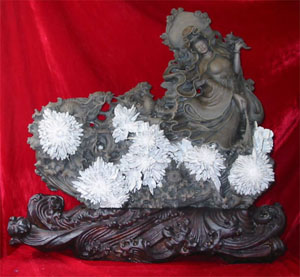
The Chrysanthemum Stone of Hunan, China occurs in the Qixia formation of Lower Permian. As the name implies. It is shaped like a Chrysanthemum, the official symbol of the Imperial Family of China. This specimen was collected from rocks at the bottom of a river. The flowers are embedded in dark gray limestone with celestite and calcite constituting the petal, and chert the stamen and pistil.
Culture
2010-11-23 17:19
View:5554

![Zhangjiajie Spring Festival [Photo Gallery]](/attachments/2011/02/2_201102151548361xq66.jpg)










